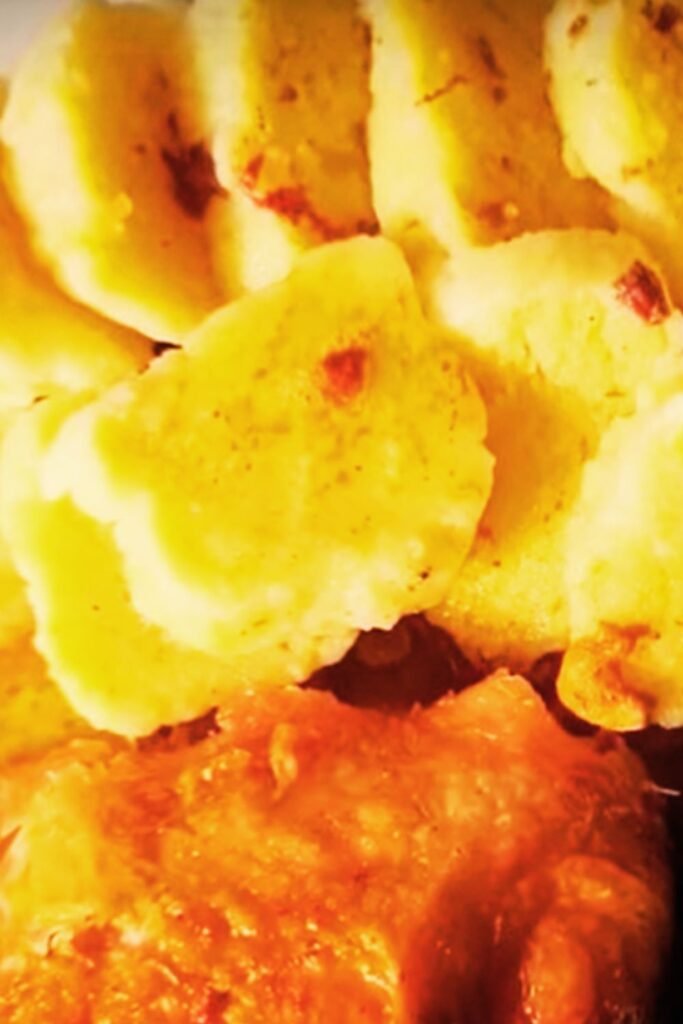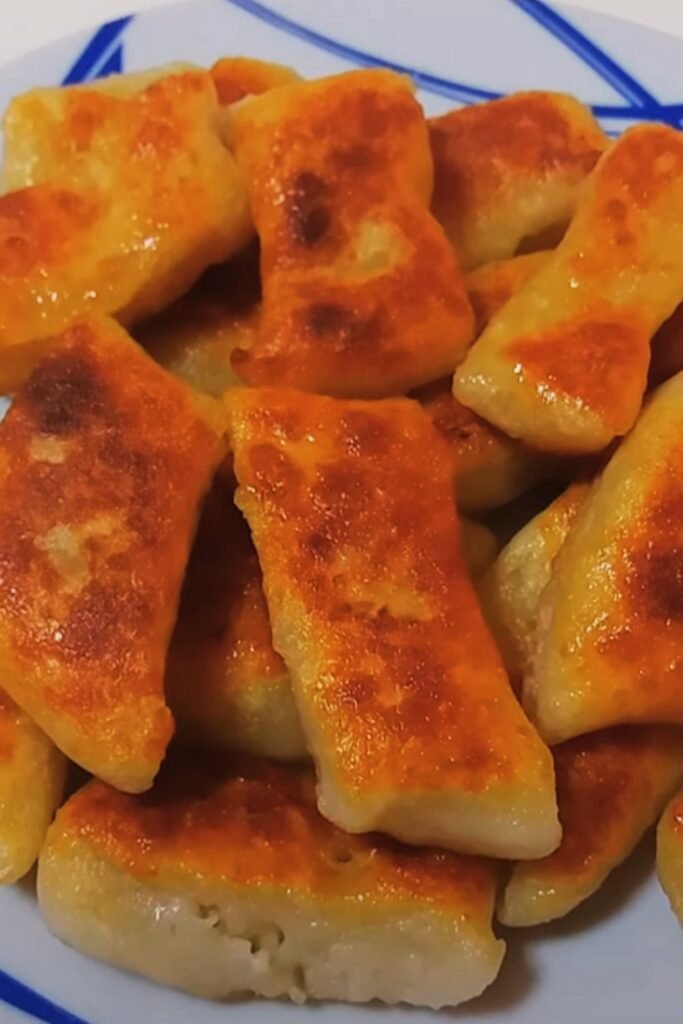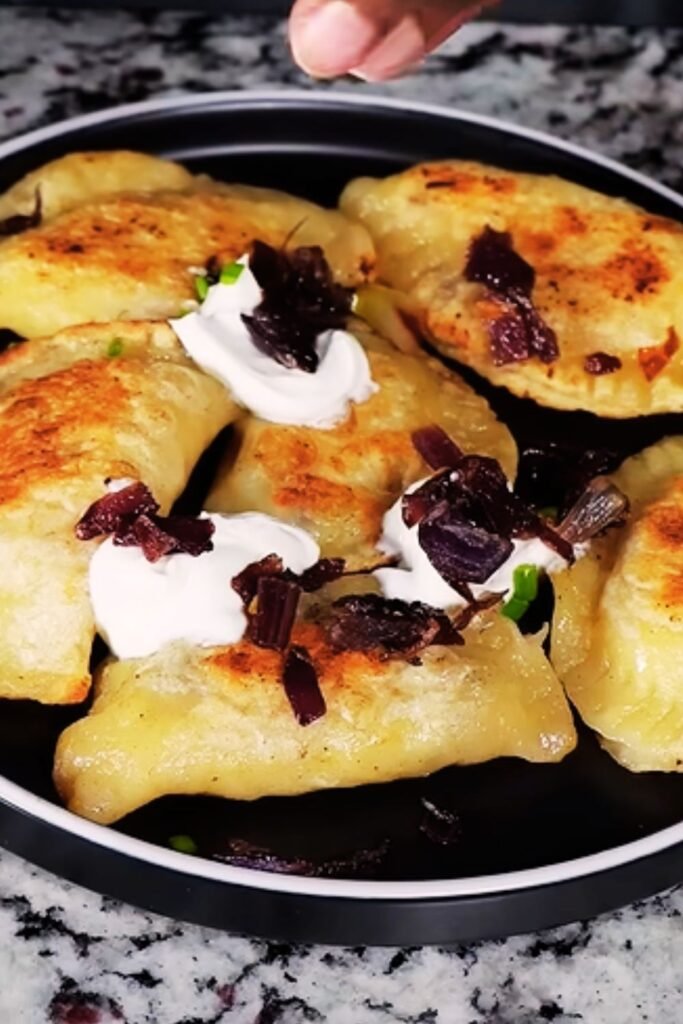There’s something truly magical about biting into a perfectly cooked kopytka. The pillowy softness gives way to a slightly chewy texture, while the subtle potato flavor serves as a perfect canvas for whatever delicious toppings you choose. As someone who grew up watching my grandmother’s hands skillfully shape these little “hooves” (that’s what kopytka means in Polish!), I’m excited to share this cherished recipe with you today.
Kopytka are traditional Polish potato dumplings, similar to Italian gnocchi but with their own distinct charm and history. They’re economical, versatile, and absolutely delicious. Whether you’re exploring your Polish heritage or simply looking to expand your culinary horizons, these potato dumplings deserve a special place in your recipe collection.
The Story Behind Kopytka
Before we dive into the recipe, let me share a bit about these delightful dumplings. Kopytka (pronounced “ko-pit-ka”) literally translates to “little hooves” in Polish, named for their characteristic shape. They emerged as a creative way to use leftover potatoes, transforming this humble ingredient into something special.
In traditional Polish cuisine, kopytka falls into the category of “kluski” – a broad term encompassing various dumpling and noodle dishes. Unlike their more famous cousin pierogi, kopytka doesn’t contain any filling. Instead, the potato is mixed directly into the dough, creating a consistent texture throughout.
These dumplings have sustained Polish families through harsh winters and difficult times for generations. They’re filling, require few ingredients, and can be dressed up or down depending on what you have available. In my family, they were often served as a midweek meal when money was tight but comfort was needed.
Essential Ingredients for Perfect Kopytka
The beauty of kopytka lies in its simplicity. You’ll need just a handful of basic ingredients:
- Potatoes: The star of the show. Starchy varieties like Russet or Yukon Gold work best.
- All-purpose flour: Brings the dough together and provides structure.
- Egg: Acts as a binder and adds richness.
- Salt: Enhances all the flavors.
- Nutmeg: Optional but traditional – adds a subtle warmth.
Choosing the Right Potatoes
The foundation of great kopytka is selecting the appropriate potatoes. I’ve tested this recipe with various types, and here’s what I’ve discovered:
| Potato Type | Texture Result | Best Used For | Notes |
|---|---|---|---|
| Russet | Light, fluffy | Traditional kopytka | Requires less flour due to high starch content |
| Yukon Gold | Slightly creamier | Modern variations | Holds shape well, lovely yellow color |
| Red Potatoes | Denser, more moisture | Not recommended | Requires too much flour, resulting in tough dumplings |
| Idaho | Very light | Traditional kopytka | Excellent starch content, widely available |
I personally prefer a 50/50 mix of Russet and Yukon Gold potatoes for the perfect balance of fluffiness and structure, but using either type alone will still give you delicious results.
Traditional Kopytka Recipe
Ingredients:
- 2 pounds (about 900g) starchy potatoes (Russet or Yukon Gold)
- 2 to 2½ cups (250-310g) all-purpose flour, plus extra for dusting
- 1 large egg
- 1 teaspoon salt
- ¼ teaspoon ground nutmeg (optional)
For Serving (Traditional):
- 4 tablespoons butter
- 1 large onion, finely diced
- 4 ounces (115g) bacon or smoked pork, diced
- 3 tablespoons breadcrumbs
- Salt and pepper to taste
- Sour cream (optional)
- Chopped fresh dill or parsley for garnish
Step-by-Step Instructions:
- Prepare the potatoes:
- Wash the potatoes thoroughly but don’t peel them yet.
- Place potatoes in a large pot, cover with cold water, add a pinch of salt, and bring to a boil.
- Cook until fork-tender, about 20-25 minutes depending on size.
- Drain well, then peel while still hot (I use a kitchen towel to hold them).
- Pass the hot potatoes through a ricer or food mill into a large bowl.
- Allow the potatoes to cool completely – this is crucial! Warm potatoes will require more flour, resulting in heavier dumplings.
- Make the dough:
- Add the egg, salt, and nutmeg (if using) to the cooled potatoes.
- Begin incorporating flour, ½ cup at a time, mixing gently with your hands.
- Add just enough flour to form a soft, slightly sticky dough that holds together.
- Be careful not to overwork the dough or add too much flour – this will make your kopytka tough.
- Shape the kopytka:
- Dust your work surface generously with flour.
- Divide the dough into 4-6 manageable portions.
- Roll each portion into a rope about ¾-inch (2 cm) thick.
- Using a bench scraper or knife, cut diagonal pieces about 1-inch (2.5 cm) long to create the characteristic “hoof” shape.
- Place the shaped kopytka on a floured tray or parchment paper, ensuring they don’t touch.

- Cook the kopytka:
- Bring a large pot of salted water to a gentle boil.
- Working in batches (I do about 15-20 at a time), carefully drop the dumplings into the water.
- Once they float to the surface, cook for an additional 1-2 minutes.
- Remove with a slotted spoon to a colander to drain briefly.
- Prepare the topping:
- While the kopytka cook, melt butter in a large skillet over medium heat.
- Add the diced onion and cook until golden brown, about 8-10 minutes.
- Add the diced bacon or smoked pork and cook until crispy.
- Sprinkle in the breadcrumbs and cook, stirring constantly, until they’re toasted and fragrant.
- Season with salt and pepper to taste.
- Serve:
- Gently toss the cooked kopytka with the prepared topping.
- Serve hot, garnished with chopped herbs and a dollop of sour cream if desired.

Modern Variations and Serving Suggestions
While the traditional bacon and onion topping is absolutely delicious, kopytka are incredibly versatile. Here are some of my favorite ways to serve them:
Sweet Variations:
- Tossed with melted butter and cinnamon sugar
- Topped with sweetened farmer’s cheese and fresh berries
- Drizzled with honey and toasted walnuts
Savory Variations:
- With mushroom gravy (perfect for vegetarians)
- Served alongside sauerkraut and roasted pork
- Pan-fried with garlic butter and fresh herbs
- Topped with goulash or other hearty stews
- Mixed into a light salad with fresh vegetables for summer
International Fusion Ideas:
- Tossed with pesto and Parmesan cheese
- Served with paprikash sauce for a Hungarian twist
- Topped with garlic butter and aged sheep cheese (oscypek)
Make-Ahead and Storage Tips
Kopytka is an excellent make-ahead dish, and I often prepare a double batch to freeze for busy weeknights. Here’s how to store them properly:
Refrigerating:
- Cooked kopytka will keep in an airtight container for 3-4 days.
- To reheat, either:
- Pan-fry in butter until golden and heated through
- Microwave with a damp paper towel on top
- Drop into boiling water for 1 minute
Freezing (Two Methods):
Method 1 – Freeze Raw:
- Place shaped, uncooked kopytka on a floured baking sheet, ensuring they don’t touch.
- Freeze until solid (about 2 hours).
- Transfer to a freezer bag, removing as much air as possible.
- Store for up to 3 months.
- Cook directly from frozen, adding 1-2 minutes to the cooking time.
Method 2 – Freeze Cooked:
- Cook kopytka as directed.
- Let cool completely.
- Freeze on a baking sheet until firm.
- Transfer to freezer bags.
- To reheat, either boil briefly or pan-fry from frozen.
| Storage Method | Maximum Time | Best Reheating Method | Quality Retention |
|---|---|---|---|
| Refrigerated (cooked) | 3-4 days | Pan-frying | Excellent |
| Frozen (raw) | 3 months | Boiling from frozen | Very good |
| Frozen (cooked) | 2 months | Pan-frying from frozen | Good |
Troubleshooting Your Kopytka
Even experienced cooks can encounter challenges when making kopytka. Here are solutions to common issues:
Dumplings Are Too Soft/Fall Apart:
- Cause: Too little flour or potatoes too moist
- Solution: Add more flour, a tablespoon at a time, until dough holds together
Dumplings Are Too Dense/Tough:
- Cause: Too much flour or overworked dough
- Solution: Use less flour next time and handle the dough more gently
Dumplings Stick to Surface:
- Cause: Not enough flour on work surface
- Solution: Be generous with flour when shaping and cutting
Dumplings Stick Together During Cooking:
- Cause: Overcrowding the pot
- Solution: Cook in smaller batches and stir gently after adding to water
Health and Nutrition Notes
While kopytka isn’t exactly health food, it can be part of a balanced diet when enjoyed in moderation. Here’s a breakdown of the nutritional profile:
| Nutrient | Amount per Serving | Notes |
|---|---|---|
| Calories | ~300-350 | Varies based on toppings |
| Carbohydrates | 45-50g | Primarily from potatoes and flour |
| Protein | 7-9g | Higher when served with meat toppings |
| Fat | 10-15g | Varies significantly based on toppings |
| Fiber | 3-4g | Mostly from potatoes |
To make kopytka slightly healthier:
- Use whole wheat flour for up to half of the flour amount
- Opt for olive oil instead of butter in toppings
- Choose yogurt instead of sour cream for serving
- Focus on vegetable-based toppings like sautéed mushrooms and greens

Cultural Significance and Serving Traditions
In Polish culture, kopytka often appear on the table for Friday meals when meat was traditionally avoided. They’re also commonly served during the pre-Easter Lenten period when simple, meatless dishes take center stage.
Traditionally, kopytka is considered a main course rather than a side dish. The filling nature of potatoes combined with satisfying toppings makes them hearty enough to stand alone.
In many Polish homes, including my grandmother’s, kopytka was served family-style from a large platter placed in the center of the table. Everyone would help themselves, often going back for seconds (or thirds!).
The Joy of Making Kopytka with Family
Some of my fondest childhood memories involve making kopytka with my grandmother. Standing on a stool beside her in the kitchen, I’d watch as she effortlessly transformed humble potatoes into something magical. She never measured ingredients, relying instead on feel and experience, adding flour until the dough “felt right” in her hands.
Making kopytka is an excellent activity to share with children. The dough is forgiving and the shaping process is tactile and fun. My own children now help me in the kitchen, their small hands perfectly suited for rolling the dough ropes and cutting the little “hooves.”
This handing down of culinary tradition from generation to generation is perhaps what makes dishes like kopytka so special. They’re more than just food – they’re connections to our past and vessels for family stories and memories.
Frequently Asked Questions
Q: Can I use leftover mashed potatoes to make kopytka?
While traditionally kopytka is made with freshly boiled potatoes, you can use leftover mashed potatoes in a pinch. Just be aware that if your mashed potatoes contain milk and butter, you’ll need to add more flour to compensate for the extra moisture. The texture won’t be quite the same as traditional kopytka, but they’ll still be delicious.
Q: Are kopytka and gnocchi the same thing?
Kopytka and Italian gnocchi are cousins, but not identical. Both are potato-based dumplings, but they differ in shape, size, and sometimes ingredients. Kopytka are typically larger and shaped like little hooves (hence the name), while gnocchi are smaller and often ridged. Traditional kopytka recipes use just potatoes, flour, and egg, while some gnocchi recipes incorporate cheese or other ingredients.
Q: My dough is very sticky. What should I do?
A slightly sticky dough is normal, but if it’s too sticky to work with, gradually add more flour, a tablespoon at a time. Remember that the amount of flour needed can vary based on the moisture content of your potatoes and the humidity in your kitchen. Work the dough on a well-floured surface and keep your hands floured as well.
Q: Can I make kopytka gluten-free?
Yes! I’ve successfully made gluten-free kopytka by substituting the wheat flour with a good-quality gluten-free flour blend. Look for one that contains xanthan gum for best results. You may need to adjust the amount of flour slightly, as gluten-free flours absorb moisture differently than wheat flour.
Q: Why did my kopytka turn out heavy and dense?
The most common cause of heavy kopytka is using too much flour or overworking the dough. For light, fluffy dumplings, use only as much flour as necessary to form a workable dough, and handle it gently. Also, make sure your potatoes are completely cooled before adding flour – warm potatoes absorb more flour, resulting in denser dumplings.
Q: Can I make kopytka ahead of time for a dinner party?
Absolutely! You can prepare them up to the shaping stage and keep the shaped, uncooked kopytka in the refrigerator for up to 24 hours (well-floured and covered). Alternatively, cook them completely, cool them down, and refrigerate. Before serving, reheat by briefly boiling them again or (my preferred method) pan-frying them in butter until golden and crispy on the outside.
Conclusion
Kopytka may have humble origins, but these Polish potato dumplings offer a world of culinary possibilities. From the traditional bacon and onion topping to creative modern variations, they’re versatile, economical, and deeply satisfying.
Making kopytka connects us to generations of Polish cooks who transformed simple ingredients into nourishing meals. There’s something almost meditative about the process – boiling and ricing potatoes, gently working the dough, shaping each little “hoof” with care.
I hope this recipe inspires you to try your hand at this beloved Polish dish. Whether you’re exploring your heritage or simply expanding your culinary horizons, kopytka offers a delicious glimpse into traditional Polish cuisine.
Remember, the key to perfect kopytka lies in using just enough flour, handling the dough gently, and cooking them with care. With practice, you’ll develop a feel for the perfect dough consistency, just as Polish cooks have done for generations.
So gather your ingredients, clear some space on your counter, and prepare to experience the simple joy of homemade Polish potato dumplings. Your taste buds – and perhaps your soul – will thank you.